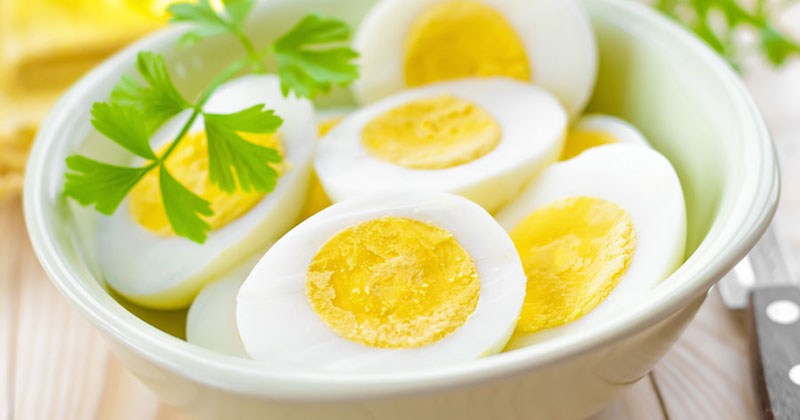The Dark Side Of Winter: Lowered Immunity, Increased Inflammation, Fatigue And Depression
Last updated on
Summer comes and goes … autumn sets in, and with it, a vague gloominess. A quiet melancholy that grows over the weeks, reaching its peak around the middle of winter.
We get sleepy, easily exhausted, and constantly tired. We tend to overeat—or lose all of our appetite altogether. We see the world in somewhat depressing shades, struggling against the cold.
If at least part of the above sounds familiar to you, welcome to the Winter Blues club!
Turns out it’s quite the phenomenon. Scientists and doctors call it subsyndromal seasonal affective disorder (or by the ironic acronym S-SAD), a mild form of depression with clear seasonal patterns.
Studies indicate that up to 6% of Americans (mostly from the northern regions) are affected by a full-blown SAD, and another 14% suffer from the mild subsyndromal form – the so-called winter blues. In the UK, the situation is even sadder: according to surveys, around 8% of the population has seasonal affective disorder, and other 21% state they have winter blues.
Why Do We Feel So Blue During Winter?
Most likely, S-SAD results from an increase in melatonin production (the “sleepiness” hormone) and a simultaneous decrease in serotonin (one of the “happiness” hormones).
The main culprits of such a mess are the dim sunlight and seasonal lack of nutrients we have to deal with. Thus the sadness, fatigue, and all sorts of health issues including inflammation and worsening of chronic conditions.
However, you have all the means to drive winter blues away or at least minimize its impact on your life until spring. And the good news is you don’t need any medications for that other than Mother Nature’s delicious treats.
Ladies and gentlemen, meet the ultimate mood boosters.
6 Foods To Beat Winter Blues
1. Cold-Water Fish
Thanks to its soaring content of omega-3s, cold-water fatty fish (sardines, mackerel, tuna and salmon) is one of the best ways to keep your winter blues at bay. This nutrient battles depression by enhancing serotonin metabolism, as well as alleviates inflammation (especially in rheumatoid arthritis and similar conditions).
2. Dark Leafy Greens
These ones are on this list for being great sources of folate, also known as vitamin B9. This nutrient is essential for the proper synthesis of serotonin and dopamine, so it’s actually no surprise that one-third of folks suffering from depression have quite low folate levels.
Also, long-term folic acid supplementation can lower your risk of heart disease by 4% and of stroke by a whole 10%. Last but not least, dark leafy greens are rich in magnesium, a nutrient that’s exceptionally effective for mild depression in adults—which is exactly what the dreadful winter blues is.
Great sources of these nutrients, are spinach, kale, collard and romaine lettuce. Excellent sources of magnesium include pumpkin seeds, chard, almonds, and avocado.
3. Eggs and Milk
Vitamin B12 is yet another nutrient causally related to depression, but it’s also crucial for your general health as well. For example, B12 is essential for the proper cellular reproduction in your body, especially of red blood cells and nerve cells.
Several studies also point out that this nutrient has powerful anti-inflammatory properties. Also, eggs and milk are a great source of vitamin D, a nutrient that’s responsible for the health of your bones AND clearly linked to depression. The human skin produces it in response to sunlight exposure, but we all know that winter doesn’t give us much of that.
Long story short, eat your eggs, and drink your milk, but not just any milk! Choose only grass-fed, organic cow’s milk or goat’s milk.
4. Dark Chocolate
Yep, dark chocolate is a direct mood booster. It increases the production and release of “happiness” hormones in your body and even lowers risk of heart disease by controlling blood pressure and fighting arterial plaque. However, keep in mind that dark chocolate is what you need as the amount of polyphenols in milk chocolate and your regular chocolate is too low, and sugar too high.
5. Ginger
Okay, we’ve talked quite a bit about the mood aspect of winter blues, but what about the sleepiness and fatigue? Worry not, the answer is univocal: ginger.
For thousands of years, this powerful root has been a staple component of traditional Eastern medicine, used as a tonic and adaptogen. Modern science reveals quite a few other benefits of ginger such as in reducing inflammation, negating nausea and vomiting, and even fighting certain types of cancer.
Last but not least, ginger is a fabulous way to keep yourself warm during the cold winter evenings!
And … 6 Foods To Avoid!
Less sunlight means more melatonin produced in your body, and thus the sleepiness, fatigue, and general apathy. But did you know that melatonin is naturally present in quite a lot of ordinary foods?
If you are prone to get all blue during winter, try to limit your intake of the following foods as rich sources of melatonin:
- Black and red rice
- Wheat
- Cranberry
- Grapes
- Mushrooms
- Pistachio
Light Therapy
Another fairly effective way of fighting winter blues is by bringing some extra light into your life.
Environmental illumination is the major factor that defines melatonin secretion, that is why the latter’s levels rise naturally during the night. In winter, though, due to the dim sunlight all around, melatonin levels can be constantly elevated, thus resulting in tiredness and sleepiness.
While the sun and weather are pretty much out of our control, artificial light can do quite a great job as well!
This is called “light therapy,” and the effectiveness of such an elegant treatment for seasonal mood issues was confirmed by multiple studies around the world.
- You’ll need a reliable 10,000 lux source of cool-white light. These often go by “Light Therapy Lamps” in online stores and cost some $90 at most.
- Best results are seen when the light therapy session is done early in the morning: no less than 20 and no longer than 40 minutes of exposure.
- Abstain from using the lamp several hours before going to bed, as this may cause sleep problems and insomnia (due to a decrease in melatonin).
- Full-spectrum light sources are the best since their light has a composition similar to that of sunlight. However, this isn’t a crucial thing.
Take Home Message
Winter can be a terrible season, and winter blues isn’t exactly the only reason for that. There’s the cold, the total absence of green and flowers, the sun that sets way too early.
But, on the other hand, winter is also full of wonders: the beauty of the first snow, the joy of Christmas, the hopes that come with a New Year. All in all, it’s a matter of perspective, to a great extent.
The tips and tricks listed in this article are guaranteed to help you with your mood throughout the cold season, but remember that the most powerful mood booster EVER is to count your blessings!
Stay positive, stay healthy!
Some of the links I post on this site are affiliate links. If you go through them to make a purchase, I will earn a small commission (at no additional cost to you). However, note that I’m recommending these products because of their quality and that I have good experience using them, not because of the commission to be made.



































 JOIN OVER
JOIN OVER
Comments